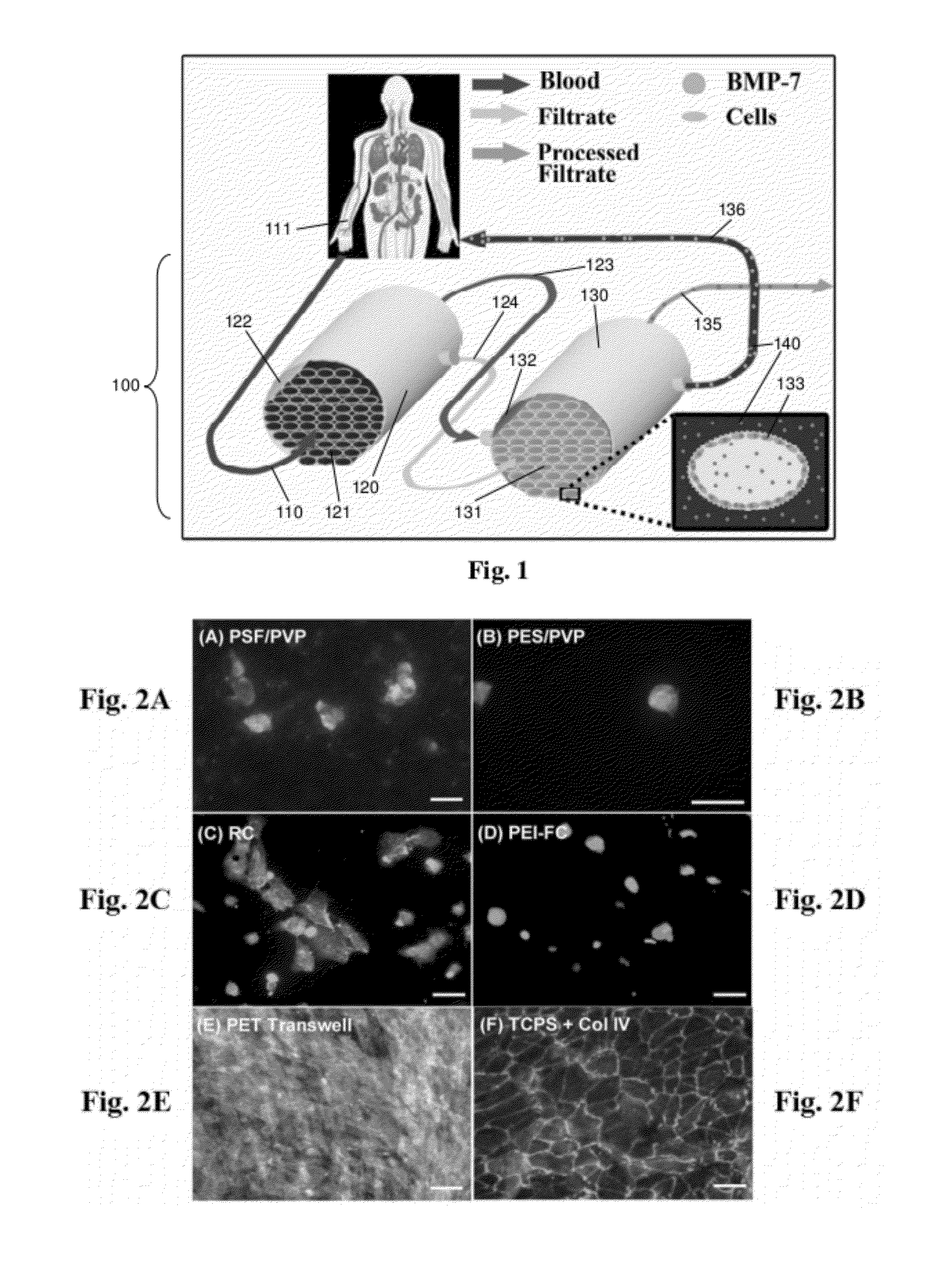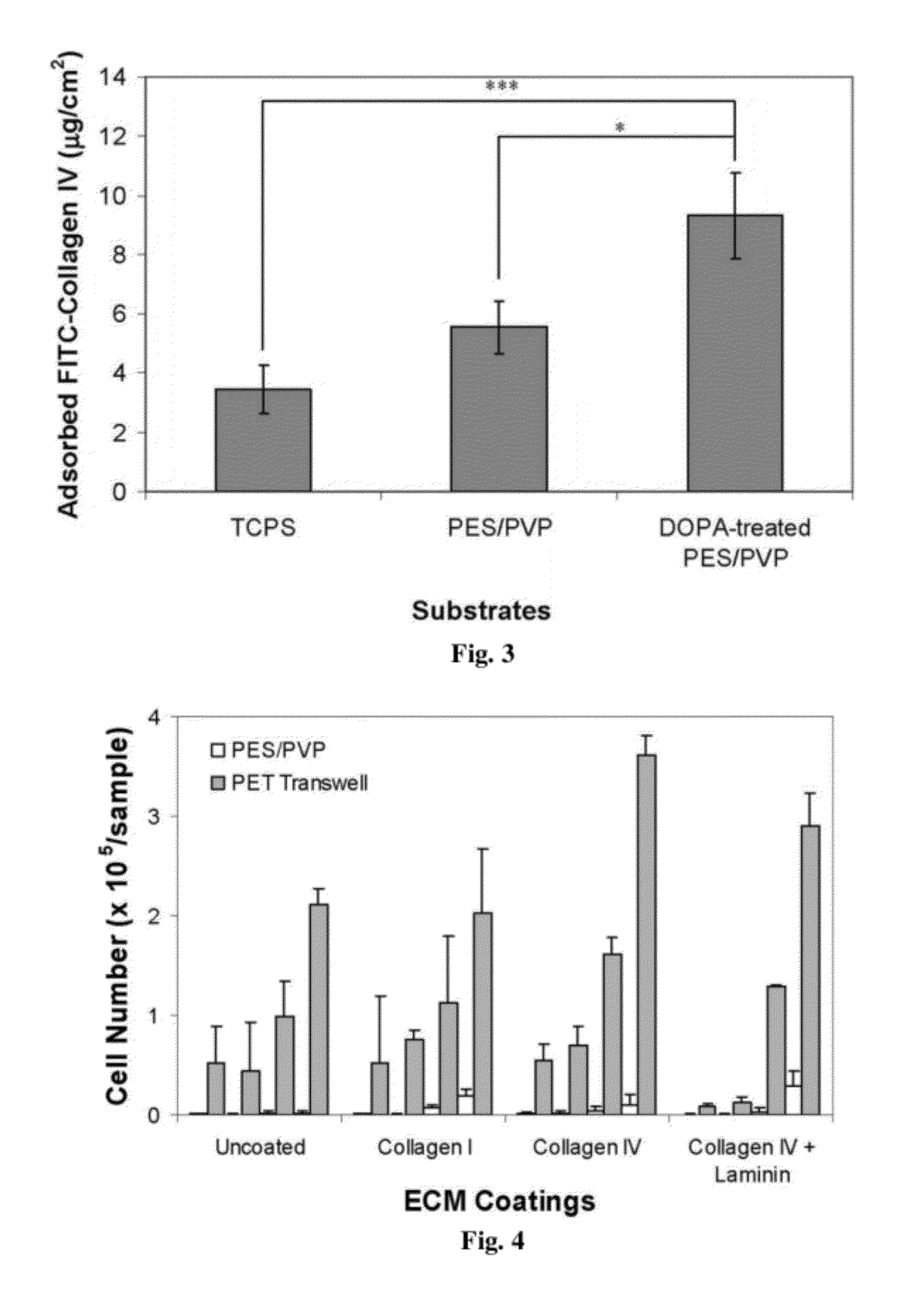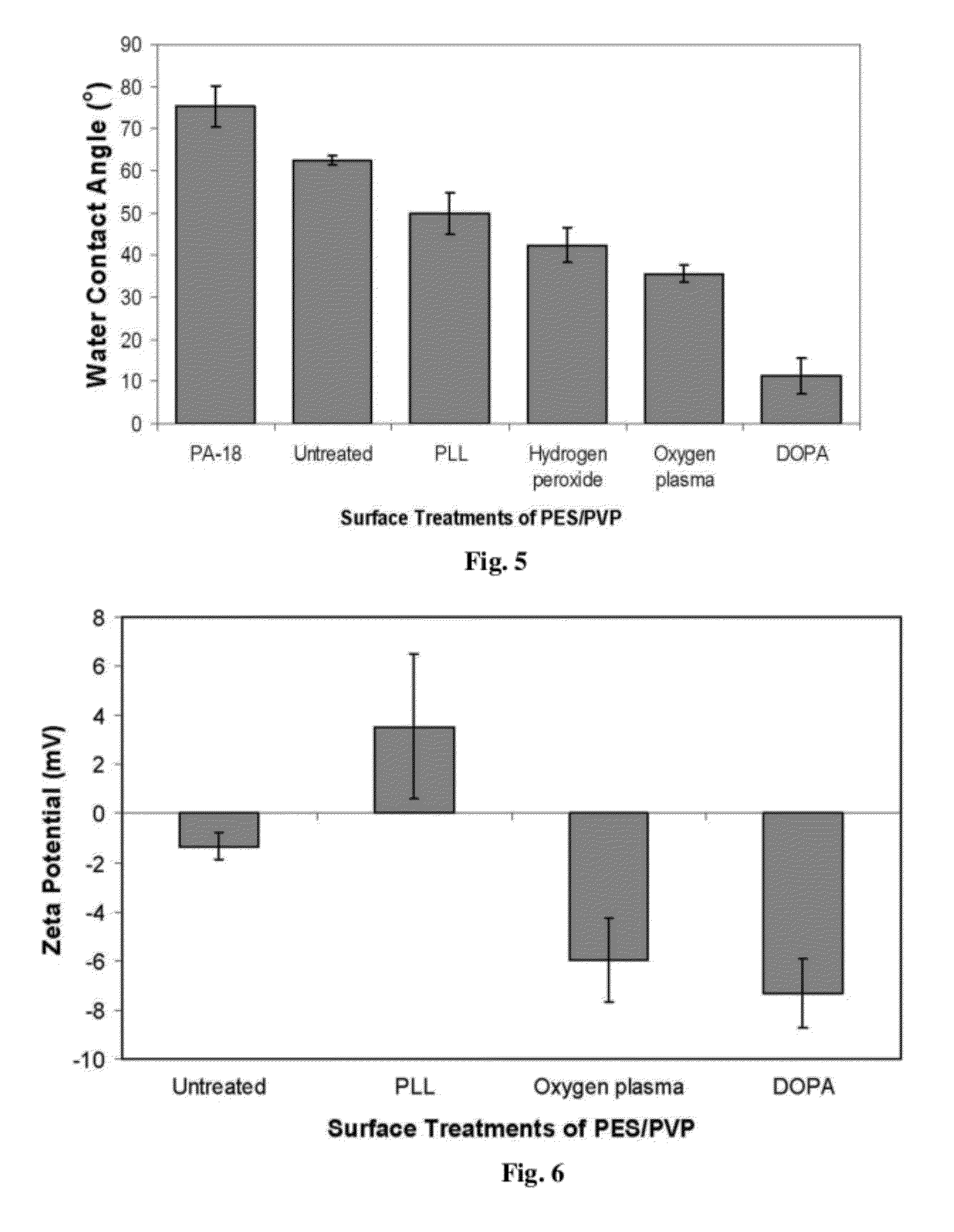Double coating procedure for the membranes of bioartificial kidneys
a bioartificial kidney and membrane technology, applied in the field of modified substrates, can solve the problems of inability to efficiently clear, prolonged intermittent treatment may be detrimental, and cannot replace the lost reabsorption, metabolic, secretory, or endocrine functions of the tubule, etc., to achieve the effect of facilitating the differentiation of cells seeded
- Summary
- Abstract
- Description
- Claims
- Application Information
AI Technical Summary
Benefits of technology
Problems solved by technology
Method used
Image
Examples
example 1
[0066]Bioartificial kidneys (BAKs) combine a conventional hemo filter in series with a bioreactor containing renal cells, such as renal proximal tubule cells. The cells may provide functions like reabsorption of glucose, amino acids, bicarbonate, electrolytes and water, secretion of toxins and xenobiotics, production of 1,25-dihydroxy vitamin D3, and immunomodulatory functions. Human primary renal proximal tubule cells (HPTCs) have been used in clinical trials and they are effective for BAK applications.
[0067]The proximal tubule cells are typically properly differentiated and may form confluent epithelia sealed by tight junctions on the porous membranes of the BAK. If this should not occur, the cellular functions may be compromised in some instances. Under such conditions, the entire BAK may still perform the functions of a normal hemofiltration device, but diffusion of ultrafiltrate components back into the blood in the bioreactor unit may occur.
[0068]This example investigates the ...
example 2
[0119]These experiments illustrate that the coating of a membrane with an adhesive as discussed herein may not substantially adversely affect water flux through the membrane. An experiment was performed with commercial polyethersulfone (PES) membranes from Millipore with a molecular weight cut-off of 30 kDa, as shown in FIG. 13. The results obtained with uncoated (left-hand bar) and coated (right-hand bar) PES membranes were not significantly different (Student's t-test, p>0.05). The experiment has been repeated and consistently no differences between coated and uncoated membranes were observed.
[0120]Further experiments to determine the potential impact on membrane permeability were carried out using non-coated Vivaspin™ columns as control and Vivaspin™ columns coated with DOPA and collagen type IV. The Vivaspin™ columns used comprised of PES membrane with a molecular weight cut off of 30,000 kDa. An example Vivaspin™ column is shown in FIG. 14A. 3 mg of urea solution was added to t...
PUM
| Property | Measurement | Unit |
|---|---|---|
| pore sizes | aaaaa | aaaaa |
| pore sizes | aaaaa | aaaaa |
| pore sizes | aaaaa | aaaaa |
Abstract
Description
Claims
Application Information
 Login to View More
Login to View More - R&D
- Intellectual Property
- Life Sciences
- Materials
- Tech Scout
- Unparalleled Data Quality
- Higher Quality Content
- 60% Fewer Hallucinations
Browse by: Latest US Patents, China's latest patents, Technical Efficacy Thesaurus, Application Domain, Technology Topic, Popular Technical Reports.
© 2025 PatSnap. All rights reserved.Legal|Privacy policy|Modern Slavery Act Transparency Statement|Sitemap|About US| Contact US: help@patsnap.com



